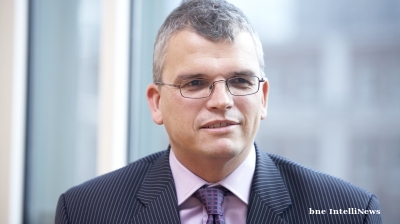Summary:
- The economic impact of the COVID-19 pandemic will hit CESEE hard and over a sustained period that will extend over and probably beyond the 1-2 year outlook.
- The tourism and regional aviation sectors will endure the most immediate consequences.
- State-owned enterprises reliant on price subsidies will also face increasing financial pressures.
- The state is likely to become an increasingly assertive actor in the region, although entrenched hybrid regimes will not be immune from political instability in the 5- to 10-year outlook, even if they have been strengthened in the medium-term.
- Multilateralism will persist as geopolitical interests compete amid strategic limbo in the region, although this will provide commercial opportunities, not least because CESEE is a gateway and relative safe haven.
- CESEE will not challenge yet alone supplant China in Western supply chains, nor will automation move any faster.
- Overall, the consequences of the COVID-19 pandemic will be, at most, to reinforce existing trends as opposed to generating new ones.
- Sectors to watch: Medical equipment; health; manufacturing (automotive and electronics); ground infrastructure; IT; education; regional aviation; tourism and entertainment.
With no end to the COVID-19 pandemic yet in sight, the prospects of a V-shaped recovery following the voluntary plunge in March appear dim.
In Central Eastern and Southeastern Europe (CESEE), several countries are experiencing an upsurge in infections, partly due to the premature lifting of the lockdowns that had been imposed with startling decisiveness.
As the infection curve fluctuates in line with the re-imposition of preventative restrictions, so too will economies. Investors must accept that this will be the “new normal” until the institutional management of the situation becomes more consistent and proportionate. Lockdowns are not desirable; but neither is a casual return to business as usual.
The length and profundity of the pandemic, as well as external geopolitical developments, distort the extent to which a clear-sighted forecast is possible. Nonetheless, as part of the new normal in CESEE, investors will need to contend with an evolving risk environment and accordingly monitor the following indicators:
Macroeconomic fundamentals
The headlines for CESEE economies will be dire in 2020, with no guarantee of a major upswing in 2021. According to Vienna Institute for International Economic Studies (wiiw), gross domestic product (GDP) is set to contract by between 3% and 11%, with the worst affected countries being those with the highest exposure to trade and tourism. Gloomy numbers aside, most CESEE states – especially those in the European Union – are in a stronger position than in 2008-09, when unrestrained credit lending and weak currencies hammered local banking sectors.
Since then, caution has prevailed, with capital buffers and local financing being strengthened, and, in some cases, proactive measures to prevent overleveraging being implemented. A financial crisis is therefore not inevitable, but the longer the downturn persists, driving a steady wave of bankruptcies, the greater the pressure of balance sheets will be. Yet there are potential phoenixes to be raised from the ashes as M&A opportunities present themselves.
State intervention
The worst-case scenario for investors – that of outright expropriation of their assets – is highly likely in CESEE to remain a relic of the pre-1990s era. However, it is clear that many countries in the region are no longer aspiring or adhering to the liberal democratic capitalist model, but rather a hybrid variant in which the state is more assertive, rolling out the red carpets for some actors while allowing others to starve. This is buffeted by an EU-wide trend in which mechanisms for the screening of foreign acquisitions are being imposed, and fiscal stimulus distributed to support companies and sectors particularly affected by the economic downturn.
At the optimistic end of the spectrum, this is likely to entail more interventionist industrial policies, including more generous subsidy and tax regimes for foreign investors.
Yet there is also a possible flipside, namely that of greater authoritarian and arbitrary conduct, as well as favouritism.
There is already a precedent for this, most obviously in Hungary, Poland and Serbia, but there are also indicators of varying shades in states including Romania, Albania, North Macedonia, Slovakia, Slovenia and Czechia, while Ukraine and Moldova remain captured by private interests.
In such an environment, investors will need to monitor indicators of “creeping” expropriation, such as special taxes, distorted tendering procedures and punitive regulatory action, as well as the politicisation of independent institutions such as the courts and regulatory agencies.
Political instability
From the perspective of an investor, the advantage of an authoritarian system is that it is stable; and if they play their cards shrewdly, the predictability crucial to a profitable venture can be ensured. Yet this stability cannot be taken for granted. “Illiberal” parties may appear entrenched in numerous countries throughout the region, a phenomenon that is multifaceted but attributable in part to the consequences of emigration, transition fatigue and the changing priorities of local elites; but civil society is growing lively, with countries such as Slovakia, Czechia, Romania, Bulgaria and Serbia having seen some of the largest and most regular protests of the post-communist era on issues ranging from corruption to the environment.
Belarus is a case in point. As President Alexander Lukashenko has struggled over the past decade to deliver the living standards tacitly accepted by the population in exchange for his autocratic leadership, the middle-class have grown disaffected. The elections due on August 9 2020 are the most competitive ever despite the fact that they are neither free nor fair: opposition candidates have variously been jailed or barred from running, while independent media coverage and polling is impossible.
Regardless of whether Lukashenko remains in power or not, the Belarusian election is a stark reminder that the image of an unassailable leader is just that, even in the most authoritarian countries in the region – and their defeat would necessarily entail a reshaping of the political and economic consensus that investors would need to navigate. Socioeconomic indicators such as inflation, wage levels, air quality and the prices of basic goods and utilities should thus factor into any risk assessment.
Geopolitics
CESEE has reverted to the historical norm owing to the competing geopolitical interests that are jostling throughout the region. Over the past decade, China, Russia and Turkey have challenged the EU and US for economic influence in the region – especially the Western Balkans – even if they have not become dominant actors. The accession of the Western Balkan and Eastern Partnership states to EU membership is looking increasingly remote. With strategic limbo prevailing in much of CESEE, with the move ‘westwards’ having stalled and institutional quality either stagnating or regressing, this geopolitical competition via corporate means is very likely to become the new normal.
Yet amid the challenges, there are opportunities. First, although EU membership is unlikely, the economic integration of much of non-EU CESEE with the bloc is likely to increase. Foreign investors will be able to take advantage of its gateway status, thereby gaining the ability to simultaneously sell into the EU, Eurasian Economic Union and even Chinese markets.
Second, despite the noisy geopolitics, CESEE is likely to remain a safe haven for US investors in particular, especially as the prospect of a trade war with China looms large.
Third, while Chinese and Russian investors may circumvent fair competition to provide quick wins to political elites, their EU and US counterparts can offer more sophisticated alternatives that respond to local needs. For example, industrial projects such as mines and factories may be powered by renewable energies, providing employment while also responding to the concerns of an increasingly environmentally conscious citizenry.
Shrewd planning, advocacy and community outreach will be required for investors to navigate their way through the risk environment to success.
Supply chains
The COVID-19 pandemic has provided a particularly loud reminder to investors as to supply chain management, such that such strategies are informed as much by risk- as cost-effectiveness. Theoretically, it would make sense for EU and US companies to diversify their supply chains away from China to the CESEE region, which is increasingly integrated economically and developed infrastructurally, as well as closer to home.
Yet in practice the region cannot even come close to replicating the industrial capacity of China. For example, 300 of the world’s top 500 companies have facilities in Wuhan alone. Even a partial shift away from China is likely to be very gradual, prioritising industrial centres of a comparable size, such as India, Indonesia and Vietnam.
Meanwhile, risks will be mitigated through the pre-emptive use of data and technology to monitor every part of the supply chain; the bolstering of inventories; and the enlisting of alternative suppliers. CESEE states may have a role to play here, especially in the low-cost production of personal protective equipment (PPE) for the European market, in which there have been shortages; however, gains at the expense of China are likely to be marginal at best.
Automation and the labour market
Unemployment has increased sharply in CESEE since the imposition of lockdowns and, amid company bankruptcies and upticks in infection rates, is likely to remain stubbornly high.
The silver lining to this is that labour markets throughout much of the region were already drum tight, with costs increasing and skill shortages looming. This pressure on investors is therefore likely to ease temporarily. Yet demographic decline, exacerbated by emigration, is the root of much of this.
While living standards are poor compared to Western Europe, and institutional change difficult, the hollowing out of CESEE will continue. This, combined with the impact of the pandemic and the associated health and regulatory measures on productivity, will arguably incentivise the acceleration of automation in the manufacturing and construction sectors.
However, in the short- to medium-term investors are unlikely to have the cash reserves to expedite this process, which is in any case already descending fast upon the region. According to the International Federation of Robotics (IFR), the annual number of robotics units sold in CESEE markets more than doubled from 7,758 in 2016 to 13,500 in 2018, with 24,300 in unit sales being forecast for 2021. Rather than expediting the process, investors should instead focus on the upskilling of the workforce to be able to operate new technologies, cooperating with technical universities to this end.
Opinion

COMMENT: US-brokered Armenia-Azerbaijan peace deal exposes Russia’s strategic failures
The recent peace breakthrough between Armenia and Azerbaijan is a major diplomatic win for the United States and a setback for Russia, according to a new report published by the Atlantic Council.

COMMENT: Why Beijing will never take Taiwan
Xi Jinping needs to think again before he sends so many young Chinese men and women to their deaths on Taiwan, for if the PLA does one day dare to land, they will be buried here.

COMMENT: Ukraine’s coming financial storm
“A crisis is drawing ever closer. It will break in Ukraine, but it won’t begin on the frontlines, where the country’s battle-weary brigades continue to impose a brutal cost on the Russian invader," writes Timothy Ash of BlueBay Asset Management.

BEYOND THE BOSPORUS: Performance postponed. Hotly anticipated “CHP” trial pushed into October
Every Turk up and down the country has an opinion on what Erdogan is up to.



